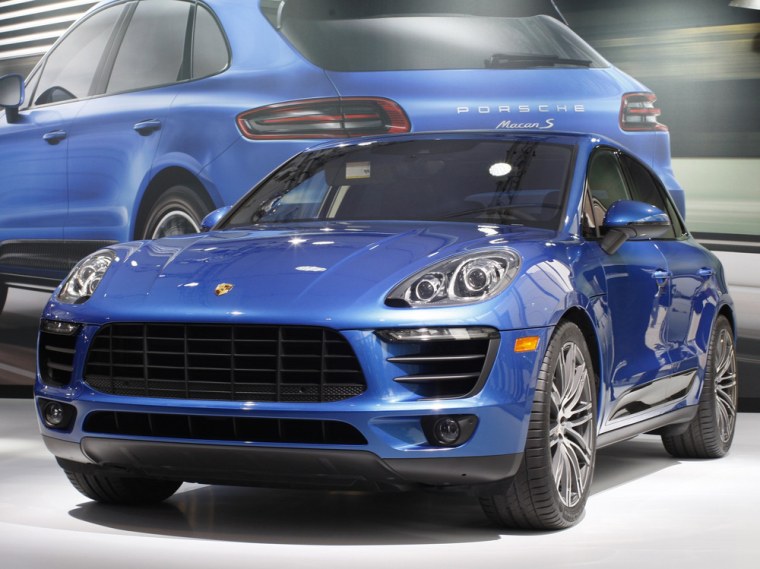American motorists have long lived by the mantra, “bigger is better.” And that’s been fine for automakers, as well, as they’ve traditionally tied prices – and profit margins – to the size of the vehicles they sell.
But with the steady run-up in fuel prices, Americans are downsizing at a pace not seen since the twin oil shocks of the 1970s. Indeed, compact Crossover Utility Vehicles have become the fastest-growing segment in the U.S. market – echoing trends in other key markets around the world.
And while you can still get a reasonably good bargain on some of these smaller, mainstream CUVs, the industry has been fracturing the traditional equation that measures price by the pound and inch.
That’s especially true in the luxury end of the spectrum where manufacturers are charging into the compact crossover segment. Just last week, Lincoln and Porsche entered the fray at the L.A. Auto Show.
Porsche has a history of challenging conventional wisdom. It proved naysayers wrong when it launched its first crossover utility vehicle for the 2004 model-year, then did it again with the four-door Panamera – today, the brand’s best-selling models. Now, it’s hoping to score again with what’s been called the “baby Cayenne,” the compact Macan.
(British Maker Mini Debuts All-New Hardtop Line at LA Auto Show)
It may be small, but the 2015 Porsche Macan will carry a big price tag: $51,095 to start. A quick check of the Porsche pricing configurator reveals that’s a full $500 more than you’d pay for a base Cayenne – and a complete shift from the traditional industry pricing model. And that’s for a stripped-down version of the 340-horsepower Macan S. Load up the 400-hp Macan Turbo and you can stretch to around $110,000.
Of course, Porsche’s new crossover is no econobox, as those horsepower numbers suggest. The new crossover features such niceties as the latest Porsche Traction Management system – all-wheel-drive a standard feature on all models. Options include a track-grade carbon-ceramic brake system.
Lincoln isn’t expected to reach quite so high with the MKC crossover it introduced in Los Angeles last week. But don’t expect to see the downsized model come cheap.
The fact is, manufacturers have been desperate to break away from the old size=price paradigm, and the new wave of luxury crossovers could help them do it, especially if they can get consumers to load up on options, as Porsche traditionally does.
The new model has already proved successful for Mini, the British brand that has shown an uncanny ability to charge a big price for its small cars, including its own crossover, the Mini Countryman, which it launched for the 2011 model-year.
But analysts say luxury crossovers offer a particularly ripe opportunity to move up-market. Despite their small footprint, they have a much bigger presence than conventional compact sedans and coupes.
(Hyundai Joining Honda, Toyota in Debuting Super-Clean Hydrogen Cars at LA Auto Show)
And that helps explain why virtually every luxury brand is pushing into the fast-growing compact crossover space. Mercedes-Benz already has the GLK in its line-up and will downsize even more with the upcoming launch of the GLA – which shares platforms with the new CLA, a coupe-like sedan.
Infiniti brought its Q30 concept to Los Angeles after initially unveiling it at the Frankfurt Motor Show this fall. Lexus also unveiled its LX-NF concept in Frankfurt, both Japanese makers soon to launch production versions. BMW has downsized with the X1, Audi with the Q3, and Cadillac is also prepping an entry that could debut in the months ahead.
As consumers walk away from full-size SUVs and CUVs, manufacturers have to generate a commensurate profit margin with their smaller models, explains Joe Phillippi, of AutoTrends Consulting. And that means, “There has to be some wow factor,” he says, adding that makers like Porsche are carrying over “all the premium componentry from their bigger models into these smaller packages.”
Though Porsche may be pushing the envelope with the new Macan, some analysts caution, consumers so far seem to be willing to accept the new pricing model, loading up their small CUVs with options and features that justify big price tags.
The bigger question is whether this trend will hold only in the luxury CUV market or will extend to other segments. There's little doubt that manufacturers would love to get full-size prices for even their base econoboxes if consumers were willing to go along.
